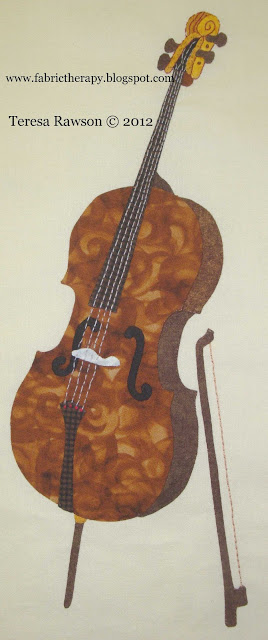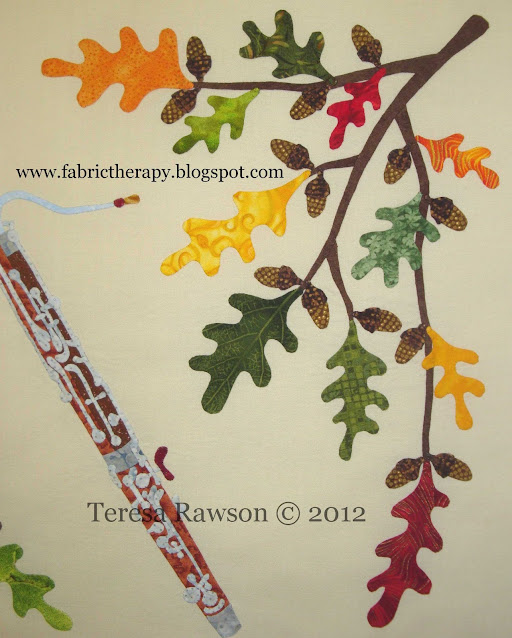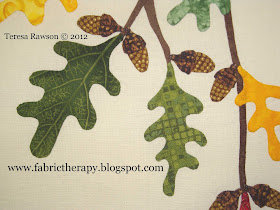After a long fall season with not enough playtime, I just had to go to the annual Christmas party/ornament exchange...despite the fact that I had minor foot surgery the day before.
I took two homemade ornaments (pictured in the previous post), so I got to pick two from the pile of mystery ornaments cleverly disguised in brown paper sacks.
Look how cute this chilly little crochet snowman is! Made by Marilyn A (no blog), he is delightfully soft and plump...I will have to put him high on the Christmas tree to keep Mr. Weasley from choosing him as a holiday plaything (that cat is attracted to ornaments made with yarn - can he smell the sheep?!?).
Debby C (no blog) made my second pick...a sweet paper-pieced Santa Claus - the perfect Santa for a quilter! He will be in good company on the Christmas tree with my feeble attempt at a triangular Santa a few years ago...
The potluck was delicious and the company warm and engaging...I made the right choice to go!
I took something easy to make as my dish to share...7-Layered Fiesta Dip. I'm sure EVERYONE makes a version of this time-honored party classic, but here is how I made mine.
I started with a 9 x 13 dish and spread an already prepared tub of jalapeno-bean dip. (This is sold under different brands and found on the chip isle of the grocery store).
Next, I mixed 12 ounces of sour cream (half a large tub) with one envelope taco seasoning, then spread that on the bean dip.
The next layers are chopped tomatoes, followed by chopped green onions. I always buy Roma tomatoes when a recipe calls for chopped - they contain less water. I used 4 for this recipe (be generous...these are the healthy layers). I followed the tomatoes with a whole bunch, chopped, of green onions (the green AND the white parts).
Two more lazy layers to go! First, a large can of already pitted, already sliced, drained (I had to do that) black olives. (Hey...I did chop fresh tomatoes and green onions...) I chase those with 2 cups of already shredded cheddar cheese - I prefer the "petite shreds" over the larger pieces.
Ta-da!! I gently press down on the whole thing to slightly squish everything together. I buy "scoops" tortilla chips to serve with the dip, but any tortilla chip will do (or "scoops" Fritos...).
Sitting around, gazing lovingly and nostalgically at my tree while listening to Christmas carols, I realized that I HAD experimented with making some yo-yo's before. I spied the the little homespun wreath, pictured at the top of the post, with plaid fabrics several years ago.
Here's a more updated version I made to take for the ornament exchange last year.
Each little yo-yo is slightly stuffed with fiberfill before pulling the gathers tight and securing. You can make the yo-yo's any size (start with a circle template twice the diameter of the yo-yo you want to make).
Here's a little yo-yo tree ornament made by Katrina L (no blog) from years past...
Cindy C (Nine Pine Quilts) sent me photos of two cute yo-yo ornaments from her tree...a birdhouse and an angel. Hmmmm...gonna have to try those...thanks for the inspiration!
Yo-yo ornaments are certainly appropriate for this yo-yo time of year.! Thank you for all your well wishes about my foot...I think things are healing nicely!
In stitches,
Teresa :o)































































